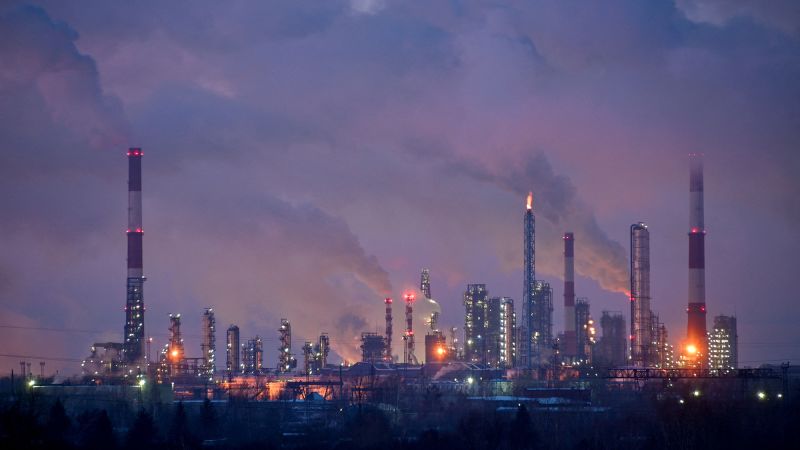This week marks a pivotal moment in international relations as President Donald Trump sets a new deadline for his controversial plan aimed at compelling Russia to cease its aggressive actions in Ukraine. The strategy involves imposing additional tariffs on nations that continue to purchase oil from Moscow. This attempt to exert pressure on Russia comes amid ongoing concerns about the protracted conflict in Ukraine and its wider implications for global stability.
In a significant move, Trump’s foreign envoy, Steve Witkoff, is scheduled to travel to Russia shortly before the deadline passes later this week. The urgency of this diplomatic mission highlights the complexities of global geopolitics, as Trump seeks to forge a path to peace while grappling with the ramifications of his economic strategies. However, analysts warn that if peace remains elusive and the tariffs go into effect, the consequences could ripple back into the American economy.
Experts caution that this new economic weapon could inadvertently impact the U.S. economy negatively. The anticipated tariffs on countries purchasing Russian oil could lead to higher consumer goods prices and reduced profit margins for American companies, potentially inflating oil prices as well. This dual-edged sword of economic sanctions raises concerns about the overall burden on the American consumer and business sector. Notably, Clayton Seigle, a senior fellow at the Center for Strategic and International Studies, articulates this dilemma, emphasizing that the punitive measures directed at Russia also present a material risk to the U.S. economy.
Trump’s proposal of a 100% tariff on Russian oil buyers if Russia’s President Vladimir Putin fails to achieve peace within a specified timeframe adds another layer of urgency. The deadline was originally set for 50 days but has been expedited to this week. The focus of these tariffs would primarily be on major buyers of Russian oil, specifically India and China—two of America’s largest trading partners. In the past year, the United States imported approximately $526 billion worth of goods from these nations.
The geopolitical landscape shifted dramatically following Russia’s invasion of Ukraine in 2022. This event led both India and China to significantly increase their purchases of Russian crude oil, capitalizing on a market where prices had dipped due to the West’s withdrawal from Russian fuel sources. As a result, Russia’s share of crude imports in China surged from 7.7% before the war to 13.5% according to data from Vortexa, an energy analytics company. Meanwhile, Russia now provides a staggering 36% of India’s crude oil imports, further complicating the tariff landscape.
Trump’s admonishment directed at India, where he vowed to escalate tariffs “very substantially” within 24 hours, underscores a growing frustration with nations that continue to lean on Russian energy supplies. The potential fallout from heightened tariffs, especially on Chinese goods, remains a pressing concern, as existing tariffs are already taxing American consumers. Giovanni Staunovo, a commodity analyst at UBS Wealth Management, cautions that such measures could provoke consumer backlash in the U.S., particularly with products that rely on imported materials.
Even as the administration may see short-term punitive tariffs as leverage, experts suggest that both India and China may doubt the sustained economic pain this could inflict on the U.S. It draws parallels to previous situations where Trump implemented steep tariffs, only to backtrack when domestic implications became too burdensome. The current situation, however, raises further questions about the potential effectiveness of secondary tariffs designed to restrain Russian oil exports.
The complexity of the global oil market underlines the strategy’s potential inefficacy. Russia is a significant player, contributing approximately 7 million barrels per day of crude and refined products—volumes that cannot be easily offset. Experts like Kieran Tompkins from Capital Economics point to the ramifications on global oil prices, particularly with Russia accounting for nearly 5% of worldwide consumption. Given that the U.S. also relies on imported crude, any elevation in these global prices could have detrimental effects domestically, despite being a major oil producer.
Currently, Brent crude oil operates as the global benchmark, showing minor fluctuations in price but still reflecting an overall decrease for the year. If the U.S. implements second-tier tariffs, the expectation is that they may not align with the initially proposed dramatic hikes. Seigle suggests that more moderate tariffs between 10% and 30% could foster a more constructive response by incentivizing nations to diversify their energy sources, rather than risk alienating their trading partners while also inflicting harm on the U.S. economy.
In summary, as President Trump navigates his plans regarding Russia’s energy market and its geopolitical ramifications, the potential for unintended consequences looms large. Economic measures that aim to penalize Russia may, paradoxically, reverberate through the American economy, raising critical evaluations of the effectiveness of such tariffs in achieving desired peace and stability in Ukraine.












